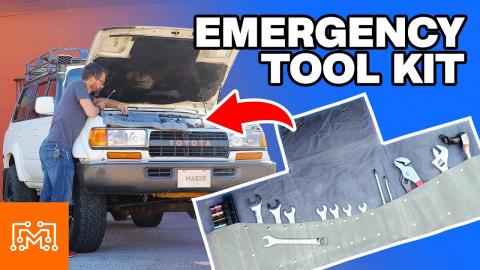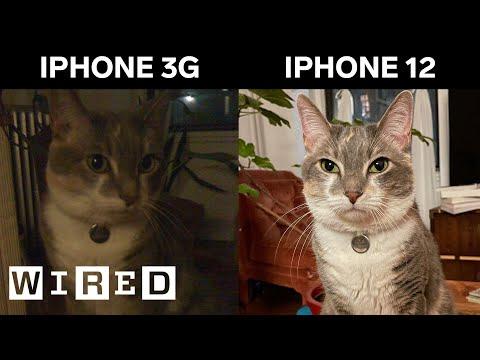Restoring an Old Director's Chair // Leather Working
Description
My wife found an old director's chair in the garbage, so I decided to restore it using leather! Thank you to Weaver Leather for providing the materials and tools for my first leather project. If you want to get started in leather working, check out https://www.weaverleathersupply.com/iliketomakestuff
Subscribe to my channel: http://bit.ly/1k8msFr
Second Channel: http://bit.ly/iltms-2
MORE PROJECTS, POSTS AND EVENTS
http://www.iliketomakestuff.com
TOOLS & SUPPLIES (affiliate links):
https://https://www.weaverleathersupply.com/
https://kit.com/iliketomakestuff/my-woodworking-tools
https://kit.com/iliketomakestuff/shop-safety-gear
I WROTE A BOOK!!
http://www.iliketomakestuff.com/makingtime
Want to support ILTMS? Get exclusive content and more...
http://www.iliketomakestuff.com/patreon
BUY A SHIRT, STICKER, NOTEBOOK, DIGITAL PLANS and MORE!!
http://www.iliketomakestuff.com/store
FOLLOW:
http://twitter.com/iliketomakestuf
http://www.twitch.tv/iliketomakestuff
http://instagram.com/iliketomakestuff
http://facebook.com/iltms
MUSIC: http://share.epidemicsound.com/iltms
If you've seen the bathroom remodel, you may have noticed that my wife prefers to refinish older items instead of throwing them out. She came upon an old, folding director's chair on the side of the road one day. It was missing the seat and the back, typically made of canvas. She brought it home and wanted me to refinish it and make it new again. The director's chair has been sitting in the basement for a while now, waiting for the right project. I think it is time to try my hand at leather working and add some new new life to this old chair.
If you're not familiar with director's chairs, they are basically wooden framed folding chairs with flexible seat and back panels. The seat hangs in between two horizontal supports on either side of your hips when seated. The seat material slides inside two channels in the wooden frame and is held in place by friction when you sit. Like I mentioned earlier, these panels are typically canvas so they can fold with the chair when stored, but I'm making these new panels out of leather.
Because of the thickness of the leather, I had to thin out the hide before I folded it over onto itself to wedge into that channel. I accomplished this using a skife knife, which acts like a scraper and removes layers of suede, making the leather thinner. Barge cement works really well at adhering leather together, so I used it to glue down the folded over ends. I measured the seat and added a little slack to make the seat more comfortable. I may, in time have to go back and shorten the seat if it starts to stretch and sag.
Now that the seat is fitted into place, I can focus on the back panel. This piece slides down over two uprights that hold either end of the panel vertically. To do this, I want to there to be a single piece of leather that will touch your back when seated and wrap around each upright. This will look nice from the front of the chair, but the back of the chair would reveal the textured suede side. I'm not really a fan of this rustic look, so I plan on covering the exposed suede with another, smaller leather panel.
To properly wrap the leather around the wooden uprights, I soaked the hide in water and used some wooden strips and clamps to form the material around the wooden posts. Once dried, the leather will maintain that shape and I can glue the pieces together. Again, using barge cement, I coated the edges of the wrapped sections and the contact points on the panel so that the loops can be adhered. I also used barge to cover the exposed suede area and the corresponding covering panel and locked them together. With both panels completed it is time to stain them a darker color using some walnut colored dye.
Dyeing the leather is a personal preference. Just like staining wood, it is adding a super concentrated pigment to the leather that changes the color. There are a variety of colors available on Weaver Leather's website, and I chose a walnut brown. Just like most wood stains, the richness in color depends on how much you apply and how long you allow the dye to saturate the hide. I dyed the two panels at the same time to keep the coloration consistent and used two coats of the dye to ensure the dark, rich color that I had envisioned.
Once the panels dried, I could focus on adding stitching. The glue should be sufficient to hold the pieces, but to ensure they durability over time and to add a decorative element, I wanted to add a simple stitch to the back panel. You can stitch leather together in a few ways; using a special chisel set that punches evenly spaced holes through the tough leather and hand sewing, or you can use a manual crank sewing machine specifically made to sew through leather. Weaver sent me a pre-release model sewing machine that can punch through four layers of hide!
To read more, go to https://iliketomakestuff.com/restoring-an-old-directors-chair/













